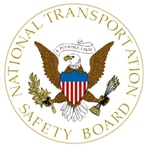While sleep scientists have established that going to work fatigued is like going to work drunk, there remains a disconnect among those who manage transportation firms. And people are needlessly dying and being seriously injured as a result.
Transportation Secretary Ray LaHood June 1 criticized his own Federal Motor Carrier Safety Administration for not sooner putting a North Carolina bus operator — allegedly with a history of safety problems, including forcing drivers to work without sufficient rest — out of business sooner.
When the FMCSA finally got around to taking that shutdown action against the bus company May 31, four more lives were lost and 54 more passengers were injured.
The cause of that rollover bus accident near Richmond, Va., May 27 was driver fatigue, according to Virginia State Police, who jailed the bus operator for reckless driving. Seven times since October 2009, the bus company — Sky Express of Charlotte, N.C. — had been cited by the FMCSA for violating federal hours-of-service regulations requiring adequate rest for drivers, according to USA Today.
“I’m extremely disappointed that this carrier was allowed to continue operating unsafely when it should have been placed out of service,” LaHood told USA Today.
Sky Express received an “unsatisfactory” safety rating in April from the FMCSA, according to USA Today, but the FMCSA extended its investigation to, according to an FMCSA spokesperson, “make sure we had an airtight case to shut the company down.”
LaHood told USA Today, “There is no excuse for delay when a bus operator should be put out of service for safety’s sake. On my watch, there will never be another extension granted to a carrier we believe is unsafe.”
The FMCSA said Sky Express had numerous violations for keeping fatigued drivers behind the wheel and failing to ensure its drivers were properly licensed, had proper medical certificates, and could read road signs in English.
The National Transportation Safety Board blamed driver fatigue for a 2008 bus crash in Utah that killed nine, and a 2004 crash in Arkansas that killed 14. A fatal bus crash near New York City March 12, which killed 15, is under investigation. The company operating the bus was cited five times in fewer than two years for allowing fatigued drivers behind the wheel.
UTU members should note that federal law protects aviation, bus and rail workers from retaliation and threats of retaliation when they report that a carrier violated federal hours-of-service regulations.
Whistle-blower complaints may be filed directly with the Occupational Safety and Health Administration (OSHA), or you may contact a UTU designated legal counsel, your general chairperson or your state legislative director for assistance.
To view a more detailed OSHA fact sheet on whistle-blower protection, click on the following link:
www.osha.gov/Publications/OSHA-factsheet-whistleblower-railroad.pdf
 Railroad and rail transit roadway workers are subject to on-the-job risks and hazards markedly different from those faced by other railroad employees. The jobs of railroad engineers and conductors include risks primarily related to moving trains – derailments, collisions with other trains; the jobs of roadway workers involve hazards that include moving rolling stock and other equipment and vehicles, as well as falls, electrocution, and natural hazards.
Railroad and rail transit roadway workers are subject to on-the-job risks and hazards markedly different from those faced by other railroad employees. The jobs of railroad engineers and conductors include risks primarily related to moving trains – derailments, collisions with other trains; the jobs of roadway workers involve hazards that include moving rolling stock and other equipment and vehicles, as well as falls, electrocution, and natural hazards.